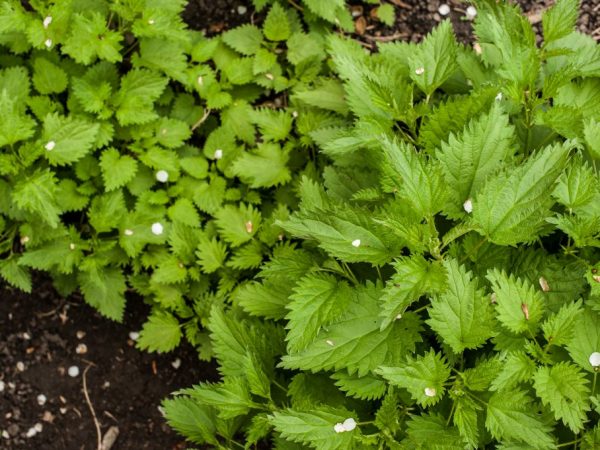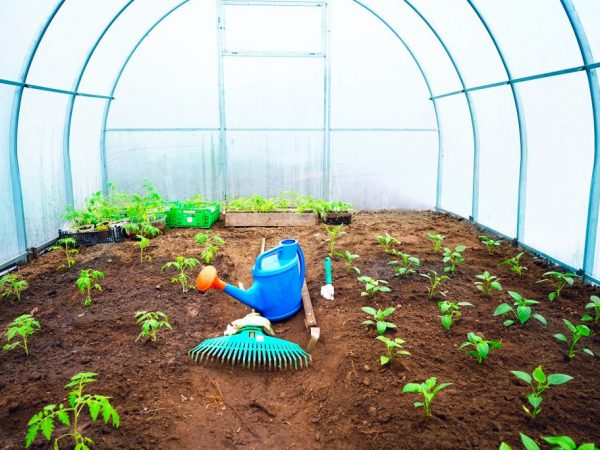Watering tomatoes with nettles
One of the most common and effective natural remedies used to feed and improve garden crops is nettle infusion. Watering tomatoes with nettles effectively affects the growth of green mass, the development and taste of fruits, and has a tonic effect on the plant.

Watering tomatoes with nettles
The benefits of watering with nettles
Almost all trace elements necessary for the normal development of plants are present in nettles. Nettle foliage is saturated with vitamin K, which promotes the process of photosynthesis, contains organic acids, vitamins, phytoncides, tannins. It contains elements that are actively assimilated by garden crops. Magnesium (6%), potassium (34%), calcium (37%) are especially useful for tomatoes.
Tatiana Orlova (Candidate of Agricultural Sciences):
Herbal infusions, including those from nettle, are fast-acting organic fertilizers. They are used only at the beginning of plant growth. With the appearance of flowers, and even more so for ovaries, their processing is stopped and switched to other fertilizers.
How to prepare top dressing
Nettle is most often used in the form of infusions. To obtain the most useful feeding, a number of recommendations are followed:
- Collect foliage only from healthy plants that are free of mottling or damage indicating disease.
- Don't expect seeds to appear. It is best to harvest nettles in the phase of active growth of green mass.
- Place the container in a sunny location. The higher the temperature, the faster the fermentation process takes place.
- Stir the mixture every day.
- Add organic fertilizers, liquid preparation "Baikal" or nutritional yeast to the container to speed up the treatment process.
Tatiana Orlova (Candidate of Agricultural Sciences):
Do not forget to cover the container with the fermented infusion with a sheet of plywood, tarpaulin or other improvised means, as the smell of this infusion is rather unpleasant.
To make tomato fertilizer, you do not need to adhere to strict proportions of ingredients. The process of preparing an infusion for watering tomatoes consists of the following sequential steps:
- Grind the collected nettle stalks together with the leaves and put them in a plastic or wooden container. We do not use metal containers so that the solution does not react with the metal and does not lose useful substances. We fill the container by half the volume.
- Fill the nettle with warm or hot water for 3/4 of the container volume.
- To speed up the fermentation process, we add a catalyst (natural organic fertilizer, ready-made product "Baikal", yeast or food starter) to the solution.
- We place the container in a sunny place and mix daily. After approximately 2 weeks, the mass stops fermenting, it darkens, the tomatoes can be watered.

Infusion will saturate tomatoes with useful substances
Nettle can also be used to prepare an equally useful infusion for irrigation, using the green mass of the plant and crackers, any remnants of bread, yeast. This infusion strengthens tomatoes well.For preparation, half of the container is filled with green mass and bread leftovers or yeast, poured with warm water, leaving a place for fermentation, during which the infusion will rise. The infusion is stirred daily, after the end of fermentation, it is used for watering and foliar dressing, after diluting it.
How to avoid fattening tomatoes
From the regular use of nettle infusion, tomatoes begin to fatten. To avoid such a problem, you should not exceed the recommended rates and frequency of feeding.
You can prepare an infusion and include, along with nettle, other herbs: dandelion, comfrey, wheatgrass. Do not put bindweed or cereals in it. An excellent result will be given by adding wood ash to the ready-made solution of wood ash before watering.
Tatiana Orlova (Candidate of Agricultural Sciences):
Dilution proportions
For watering tomatoes under the root, the infusion is diluted with water in a ratio of 1:10. Tomatoes are well watered before and after top dressing. The frequency of fertilization is once every 2 weeks.
A good result is obtained by spraying tomatoes with the same infusion, if you first dilute it with water in a ratio of 1:20.
Storage rules for infusion
The fertilizer can be stored at freezing temperatures in the container in which it was prepared, or it can be poured into another plastic container. If a large amount of fertilizer has been made and it has not been used in the current year, you can put the container with it in the cellar and water the tomatoes next summer.
Herbal infusions are the most accessible and inexpensive form of fertilizers used for root and foliar dressing. Correct preparation and application of infusions will ensure the resistance of tomatoes to diseases and excellent yields. Having become convinced of the effectiveness of natural fertilizers, gardeners reduce the use of mineral fertilizers or even refuse them altogether.
Tatiana Orlova (Candidate of Agricultural Sciences):
If there are many weeds around or in the area, then before they reach seeding, they can be used to prepare good plant compost. The cut weeds are composted in a heap, sandwiched with earth, watering 1-2 times a week for rapid decomposition.



